Bringing History to Life: How AI Voice Effects Can Revolutionize Storytelling in Education
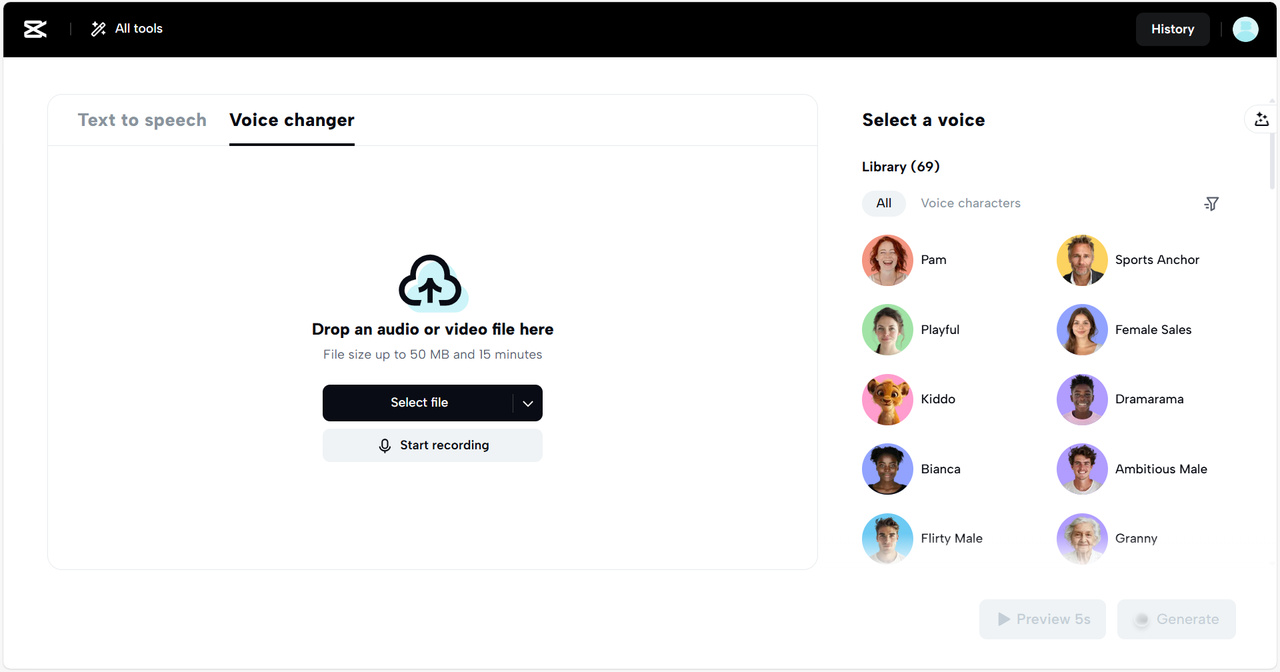
Storytelling has always been an essential tool in education, helping students connect with the past in meaningful ways. With advancements in AI technology, educators now have new ways to bring history to life. One of the most exciting tools available is a voice changer, which allows educators and content creators to modify voices to sound like historical figures or create immersive audio experiences. By using AI-driven voice effects, lessons become more engaging and interactive, making history feel more like a lived experience than just facts in a textbook.
These AI-powered tools enable students to hear speeches in authentic voices, recreate historical dialogues, and immerse themselves in past events, fostering deeper understanding, curiosity, and a stronger emotional connection to history.
Making history more immersive with AI tools
AI-generated voices can bring historical figures and events to life, making education more engaging and interactive. Students can experience key speeches, historical dialogues, and ancient texts in a more dynamic way through voice changers and text to speech free tools. These AI-driven solutions allow educators to convert historical documents into narrated audio, helping auditory learners absorb information more effectively. By integrating AI into history lessons, educators can create immersive storytelling experiences that enhance understanding and make the past feel more tangible. AI voice changers allow teachers to create these unique experiences, making historical education more dynamic.
Another benefit of AI-driven storytelling is accessibility. Not all students learn in the same way, and some may struggle with reading lengthy historical texts. With text-to-speech technology, students can listen to key historical speeches, letters, and primary sources, improving comprehension and retention.
Enhancing engagement through AI-generated captions
Alongside AI voice effects, AI-generated captions can make historical storytelling more inclusive and interactive. A great tool for this is an AI caption generator, which automatically transcribes and adds captions to videos. This feature is particularly beneficial for students who are hard of hearing or for those who prefer to read along while listening to historical narrations.
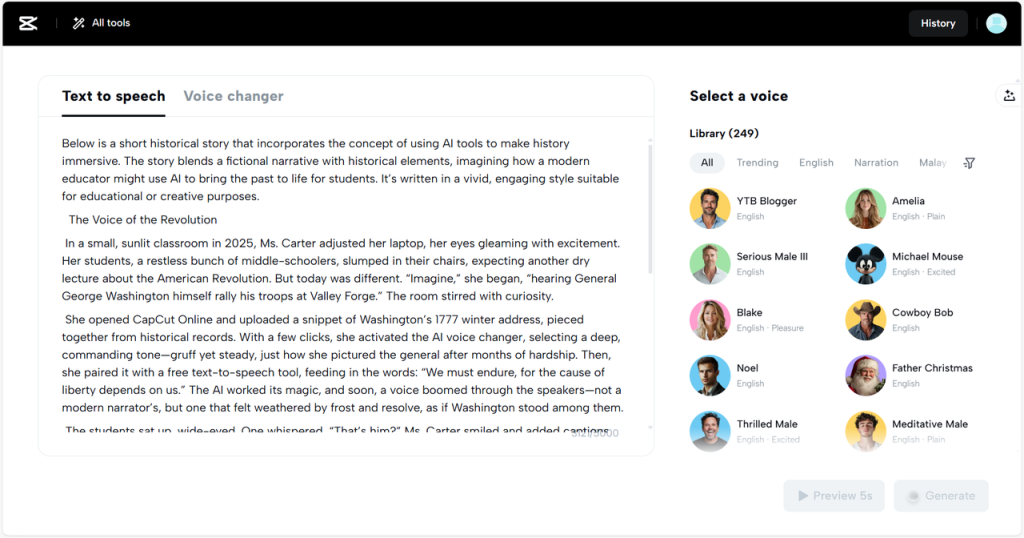
By using AI-generated captions, teachers can also support multilingual students. Captions can be translated into various languages, helping non-native English speakers grasp historical content more easily. This inclusivity ensures that everyone in the classroom can fully participate in history lessons, regardless of their learning preferences or language proficiency.
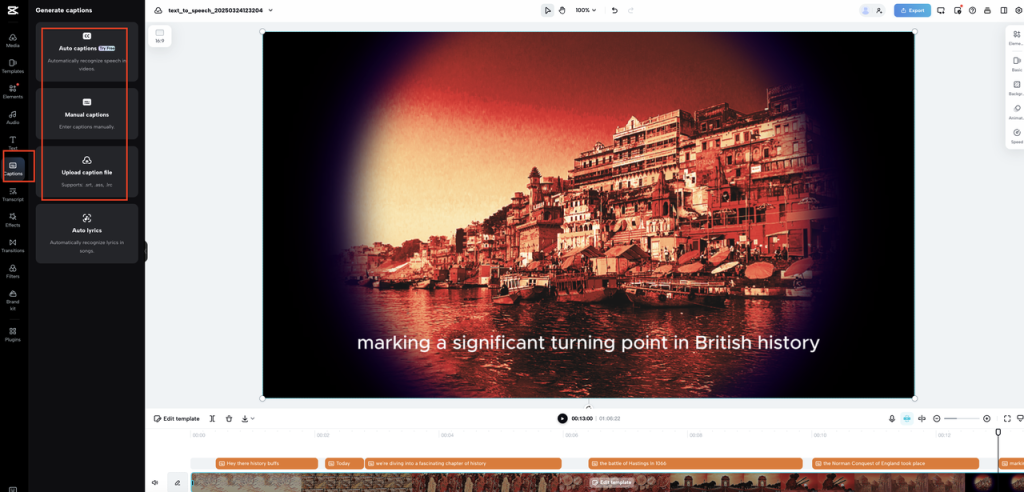
How AI voice effects transform educational content?
AI-powered voice effects go beyond just modifying voices—they allow educators to create fully immersive storytelling experiences. Here’s how AI voice effects can revolutionize history education:
- Recreating historical figures
Using AI voice changers, educators can make historical figures “speak” to students in a more authentic way. For example, rather than reading aloud a speech by Winston Churchill, a teacher can use AI to generate a voice that mimics his tone and style. This can make historical lessons feel more vivid and engaging.
- Role-playing and simulations
AI-generated voices allow students to participate in historical role-playing activities. For instance, students can create their own historical dialogues by selecting voice effects that match different historical characters. This hands-on learning approach can make history more engaging and interactive.
- Personalized learning experiences
AI-driven voice tools enable students to create their own narrated historical content. Whether it’s a podcast, a video essay, or a reenactment, AI voice changers can help students explore history in creative ways that align with their individual learning styles.
Steps to use CapCut Online text to speech
CapCut Online offers an easy way to convert text into speech, making it a valuable tool for educators. Here’s how you can do it in three simple steps:
Step 1: Enter or generate text
Open CapCut Online and go to the Text-to-speech feature. Enter your text in the input box or use the AI writer to generate a script based on your chosen category, like movies, commercials, motivational stories, or tech insights.
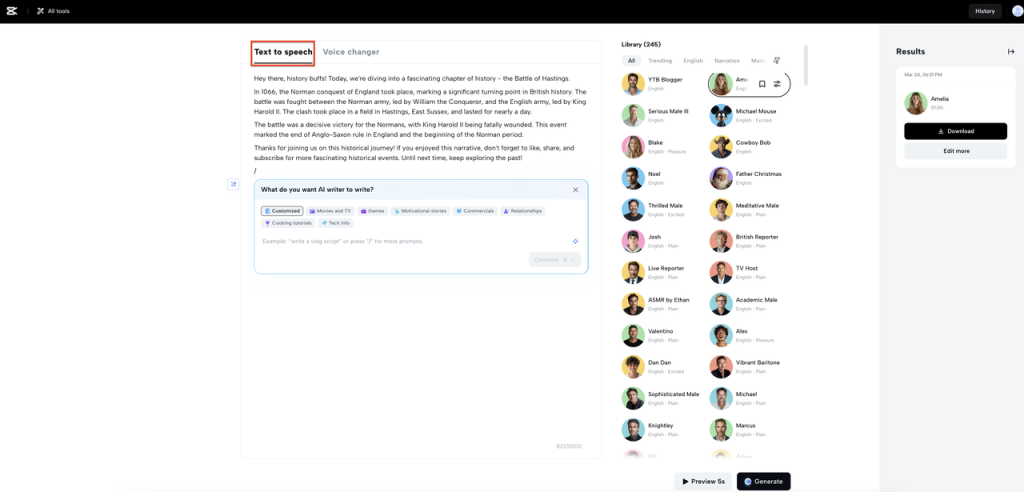
Step 2: Choose a voice and adjust the settings
After entering your text, go to the Select a voice section on the right. Explore the Library to find the perfect voice for your project. CapCut Online provides a range of options, including various accents, tones, and narration styles. You can also filter voices by language and gender for a more refined selection.
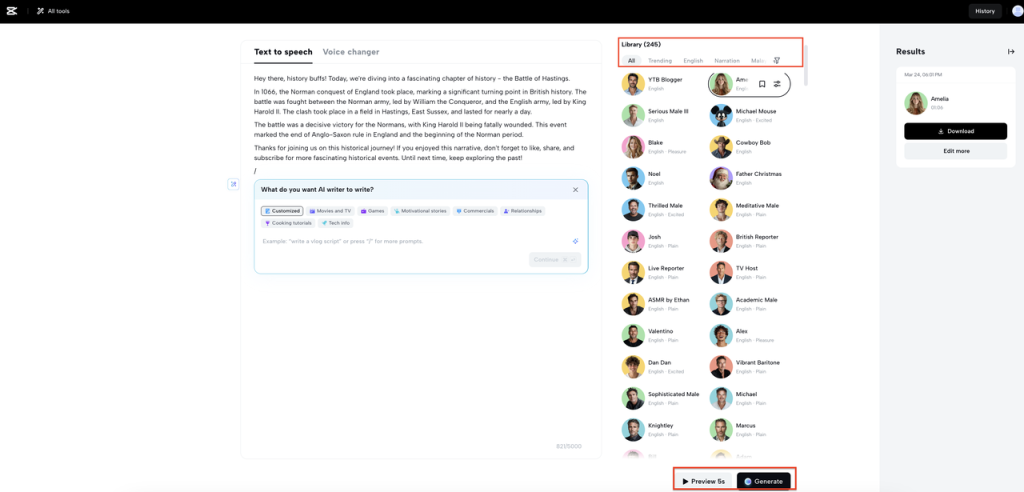
Step 3: Download or refine your modified audio
Once the processing is complete, the updated voiceover will appear in the Results section. Play the generated file to review the final output. If it meets your expectations, click Download to save it to your device.
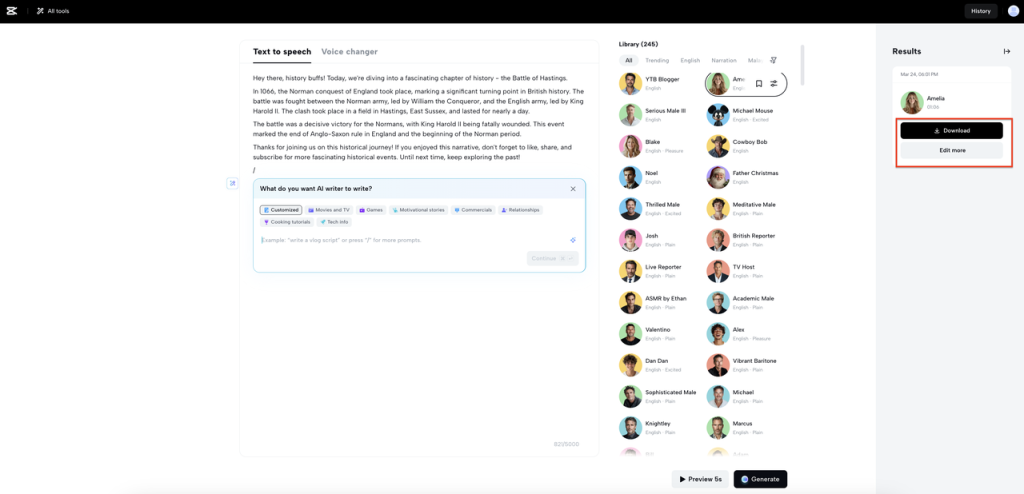
The future of AI in historical education
As AI technology continues to evolve, its potential applications in education are endless. AI voice changers, text-to-speech tools, and AI-generated captions are just the beginning. Future advancements may include AI-powered virtual historians who can answer students’ questions or fully immersive historical VR experiences where students can “converse” with historical figures.
CapCut Online and similar AI tools are making these possibilities more accessible to educators and students alike. By integrating AI-driven storytelling techniques into history education, teachers can transform the way students interact with the past, making history lessons more engaging, interactive, and inclusive.
Incorporating AI into historical storytelling not only enhances student engagement but also fosters a deeper understanding of historical events. By using AI voice effects, text-to-speech technology, and caption generators, educators can bring history to life in ways that were never before possible. The future of history education is here, and AI is leading the way.


